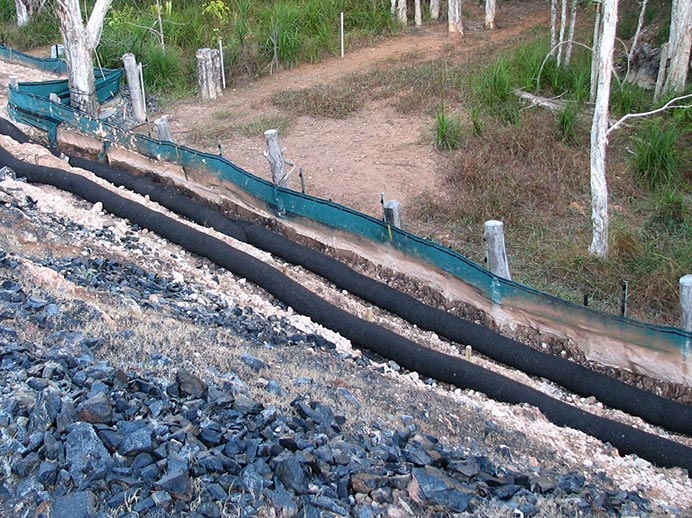Description
Filter soxx used for slope interruption
- Installed horizontally across the contour of hill slopes perpendicular to sheet flow to stop erosion.
- Most effective when runoff is in the form of sheet flow and on long slopes prone to rill erosion.
- Provides sediment control and filtration of soluble pollutants from runoff.
- Can be direct seeded to allow vegetation establishment to provide permanent control of runoff velocity.
Slope Interruption Soxx Installation
- Slope interruption shall be installed horizontally along the contour of slopes and perpendicular to sheet runoff flow.
- Stakes should be installed on the low side of the soxx at 3 metre intervals.
- Stakes should be 50mm x 50mm x 600mm softwood and should be located as follows:
- sand and loam soils = 300mm deep
- clay soils = 200mm deep
- If the sediment control soxx is to be left as a permanent filter or part of the natural landscape, the soxx may be seeded at the time of installation for the establishment of permanent vegetation.
Inspection and Maintenance
- Routine inspection should be conducted within 24 hours of a runoff event or as designated by the regulatory authority.
- Slope interruption soxx should be regularly inspected to make sure that they maintain their shape and that they are producing adequate hydraulic flow through.
- If ponding becomes excessive, additional sediment control may be required to reduce effective slope length, or sediment removal may be necessary.
Filtrexx® filter soxx used for slope interruption should be used in conjunction with geotextile matting and compost blankets.
Sediment Control Soxx Applications
- Mining and coal seam gas sites.
- Road and rail infrastructure.
- Urban and rural subdivisions.
- Golf courses.
- All erosion control and stormwater management projects.






Integrated Erosion Control Australia –
For Slope Protection, Integrated Erosion Control Australia is the #1 company in Australia specialising in a range of erosion protection products. Slope Protection reduces erosive potential while trapping moving sediment and soluble pollutants thus reducing the potential for rill erosion. Talk to us today!